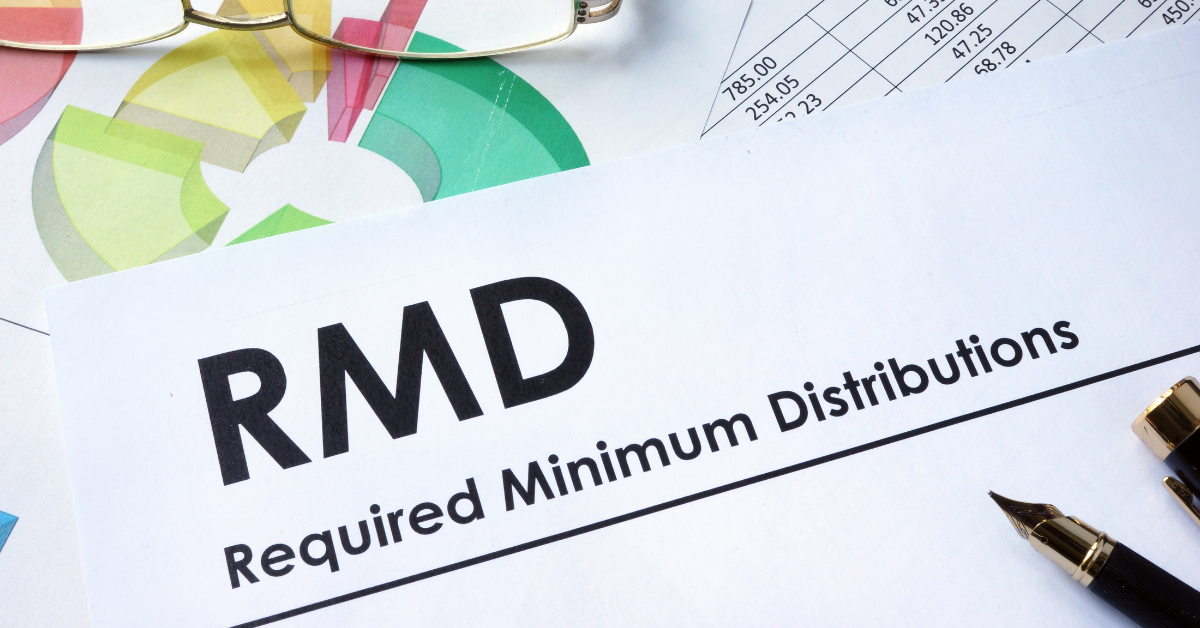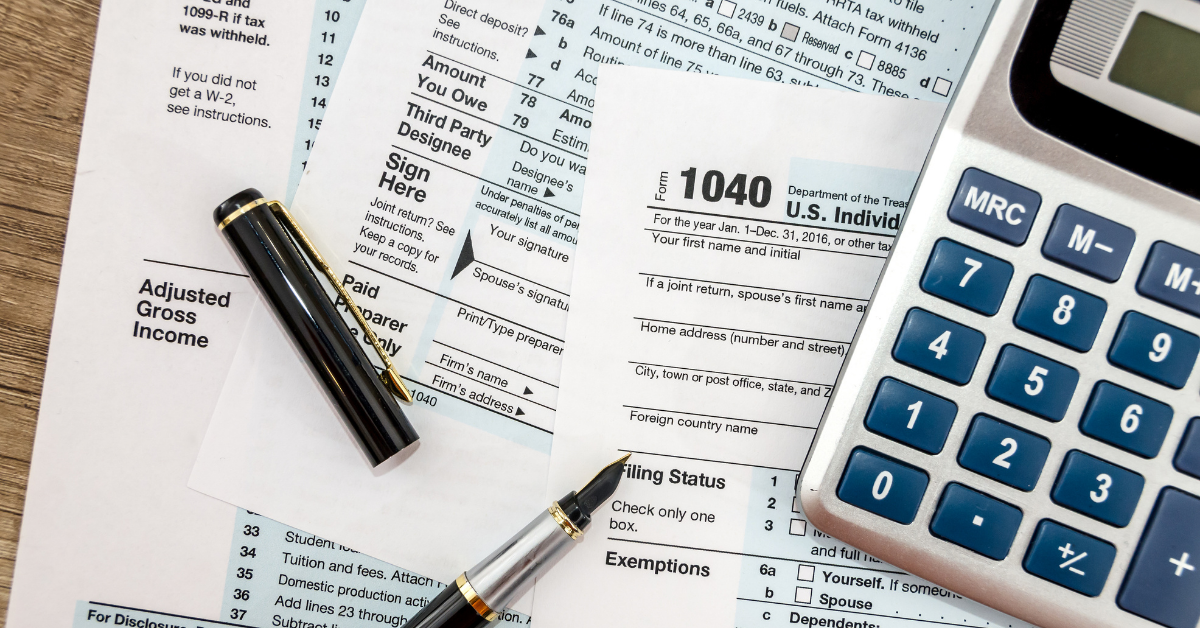Required Minimum Distribution: What It Is and How to Calculate It
September 15, 2021
Required Minimum Distribution: What It Is and How to Calculate It
September 15, 2021
Share this post:
Last updated: 02/28/2024

Required minimum distributions are important to your overall income strategy in retirement, but the rules can be complex, especially if you have multiple retirement accounts. Read on for more about what a required minimum distribution is, how to calculate it, and special exceptions for taking an RMD.
What Is a Required Minimum Distribution?
Put simply, a required minimum distribution (RMD) is the amount of money you must withdraw at a certain age—and beyond—from qualified tax-deferred retirement accounts (like an employer-sponsored retirement plan like a 401(k) and 403(b) or a SEP IRA, Simple IRA, rollover IRA, traditional IRA, and other small business accounts) to avoid steep tax penalties. Then, you must pay income taxes on the withdrawals. As of 2024, the age at which you must begin withdrawing from your retirement accounts is 73. You must continue withdrawing your RMD amount each year after that and must take your first withdrawal by April 1st of the following year after turning 73.
If you have multiple retirement accounts, you may be required to take an RMD from each. Or, you can calculate your total RMD across all your qualified accounts and elect to take the RMD from one or any combination of them, e.g., IRA and 403(b) RMDs must come from your IRA and 403(b), respectively. You also don’t have to take your RMD(s) in one lump sum; you can divvy it up into incremental withdrawals throughout the year. Any distribution taken throughout the year from your tax-deferred retirement accounts will count toward your annual RMD.
A required minimum distribution acts as a way to ensure people are paying taxes on their retirement savings, as they count towards your total annual income and are taxed federally as ordinary income. You may also have to pay state and other local taxes. Any previously taxed part (your principal or basis) or other qualified distributions that can be withdrawn tax-free would be excluded as taxable income.

How Do You Calculate an RMD?
To calculate an RMD for any given account, divide the account’s year-end fair market value from the previous year by the distribution period or life expectancy (this factor decreases as you age). In general, your plan administrator will calculate your RMD(s) to report to the IRS. The IRS has various worksheets and an online calculator you can use to help calculate your RMD(s); there are also many other online calculators available to do this (like this one from AARP). Your financial professional and plan custodians can also assist with this calculation. It’s worth mentioning that the required minimum distribution is just that—the minimum. Account holders can elect to withdraw more than the RMD; just keep in mind that the tax implications could continue to increase as they withdraw more money in one tax year.
For example:
Mary is 74 years old (and will still be by year-end). Her account balance is $750,000 on December 31st, and her withdrawal factor (per the IRS) is 23.8.
$750,000 ¸ 23.8 = $31,512.61
Mary needs to withdraw at least $31,512.61 from her applicable retirement account. This calculation would need to be repeated for all of Mary’s qualified retirement accounts.
As with anything, different factors will change your RMD calculation, including “timing of the withdrawal, changes in marital status or beneficiary age, and the death of an account owner” (per the IRS). Also, if your spouse is 10 years younger than you or more, there are additional considerations in Publication 590-B to take before calculating an RMD.
Exceptions and Special Cases
Some retirement plans allow for RMD deferrals for certain account owners, even past the age of 72. Your employer/HR department and/or plan administrator can determine if you’re eligible for this deferral. Roth accounts have different RMD requirements: RMD rules do not apply to Roth IRAs but are still applicable to Roth 401k accounts (unless the plan sponsor still employs you). Also, if you own 5% or more of the company sponsoring your retirement plan, you’re required to take RMDs starting April 1st of the year following the year in which you turn age 73, even if the company still employs you.
Inherited IRAs have special requirements: For the year in which the account owner died, you are still required to take an RMD in the same amount the account owner would have. Then, for the proceeding years, the RMD amount varies depending on the beneficiary’s relationship to the original IRA owner, e.g., surviving spouse, child, and so on. IRS Publication 590-B contains a complete listing of inherited IRA rules—and more—here.
When Do You Have to Take Your RMD?
Your total RMD is required to be withdrawn by December 31st of each year. However, in the first year, you’re required to take an RMD, you can defer it until April of the following year; keep in mind that you’ll be required to make another withdrawal for that same year by December 31st, which means you’ll be taking two withdrawals in the same tax year. This means you’ll pay taxes on both for the following tax year, as they count as taxable income, which could push you into a higher tax bracket. A tax professional can help you better understand the tax implications of your RMDs so that you can make the best decision for you and your financial situation.
You can delay taking RMDs if you’re still employed beyond age 73 with the company sponsoring your 401(k) (or another qualified retirement plan). You will have to begin taking RMDs after you retire. An easy—and completely legal—way to avoid taking an RMD in retirement is to roll over your retirement account(s) into a Roth IRA. Your tax bill will be bigger the year you do this, but you can avoid taking RMDs beyond that year and thus further tax implications. This money can continue to grow tax-free until the owner’s death, and you can take principal withdrawals from your Roth IRA tax-free.

Failing to take an RMD when required, withdrawing too little, or missing the RMD deadline can incur IRS penalties—up to 25% of the amount not taken by the deadline—and possible additional taxes. To avoid this, you will want to consult a financial professional who can help you calculate and allocate your withdrawals.
If you want to learn about more personalized and advanced strategies, schedule a 15-minute call with our team.
Schedule Your Complimentary 15-Minute Call
Want expert retirement and investing advice? Subscribe to our YouTube channel and check out our weekly podcast with The Sandman!
Listen to Protect Your Assets anywhere you get your podcasts:
Standard Disclosure
This blog expresses the author’s views as of the date indicated, are subject to change without notice, and may not be updated. The information contained within is believed to be from reliable sources. However, its accurateness, completeness, and the opinions based thereon by the author are not guaranteed – no responsibility is assumed for omissions or errors. This blog aims to expose you to ideas and financial vehicles that may help you work towards your financial goals. No promises or guarantees are made that you will accomplish such goals. Past performance is no guarantee of future results, and any expected returns or hypothetical projections may not reflect actual future performance or outcomes. All investments involve risk and may lose money. Nothing in this document should be construed as investment, tax, financial, accounting, or legal advice. Each prospective investor must evaluate and investigate any investments considered or any investment strategies or recommendations described herein (including the risks and merits thereof), seek professional advice for their particular circumstances, and inform themselves about the tax or other consequences of any investments or services considered. Investment advisory services are offered through Liberty Wealth Management, LLC (“LWM”), DBA Liberty Group, an SEC-registered investment adviser. For additional information on LWM or its investment professionals, please visit www.adviserinfo.sec.gov or contact us directly at 411 30th Street, 2nd Floor, Oakland, CA 94609, T: 510-658-1880, F: 510-658-1886, www.libertygroupllc.com. Registration with the U.S. Securities and Exchange Commission or any state securities authority does not imply a certain level of skill or training.
References
Blessing, Elizabeth. (2021, January 19th). Required Minimum Distribution (RMD). Investopedia. https:/F/www.investopedia.com/terms/r/requiredminimumdistribution.asp
Fidelity. (n.d.). Required minimum distributions. https://www.fidelity.com/building-savings/learn-about-iras/required-minimum-distributions/overview
IRS.gov. (2021, June 26th). Retirement Plan and IRA Required Minimum Distribution FAQs. https://www.irs.gov/retirement-plans/retirement-plans-faqs-regarding-required-minimum-distributions
Lankford, Kimberly. (2014, June 3rd). Avoiding Requirement Minimum Distributions from Roth 401(k)s. Kiplinger. https://www.kiplinger.com/article/retirement/t001-c001-s003-delaying-required-minimum-distributions.html
Simon, Javier. (2021, February 25th). How to Calculate Required Minimum Distribution (RMD). SmartAsset. https://smartasset.com/retirement/how-to-calculate-rmd
